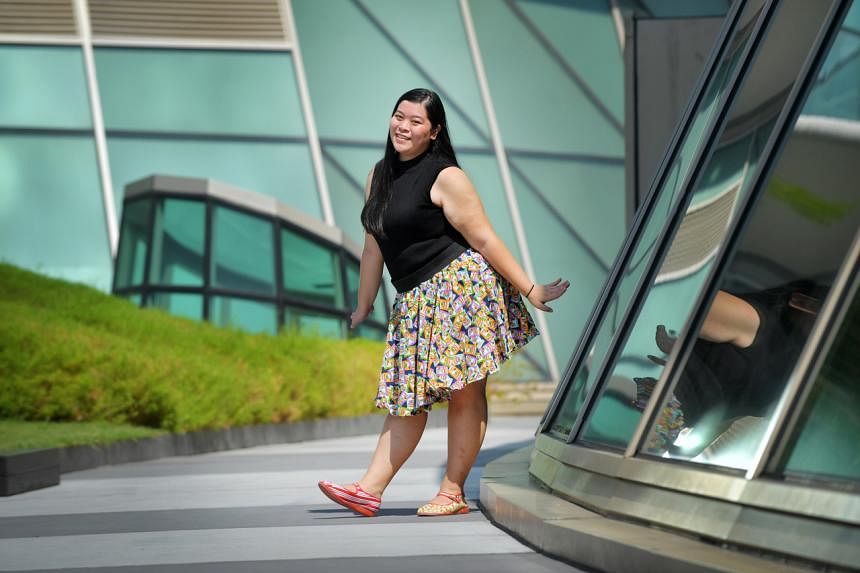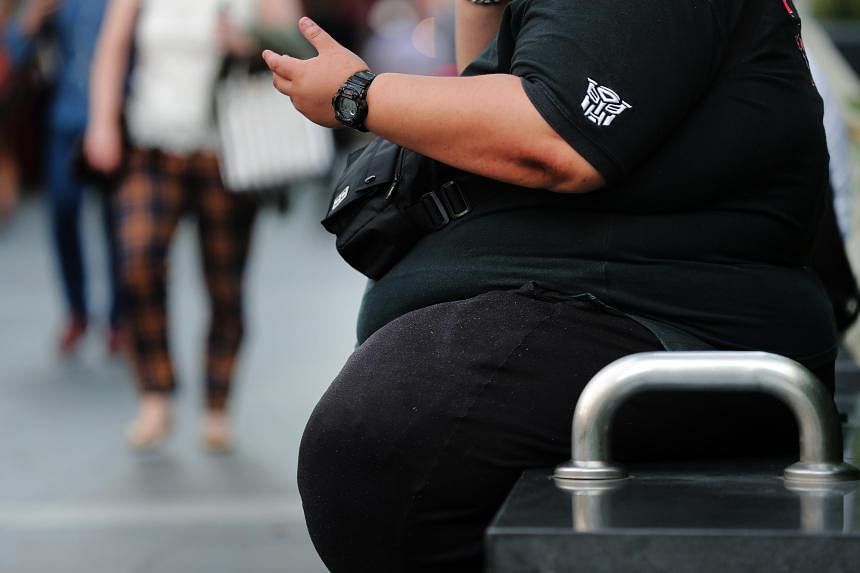Is it genetic?
Or is obesity just plain gluttony and the result of laziness and the lack of discipline to exercise and watch what one eats?
"Advocacy groups such as The Obesity Collective from Australia are now calling for industrywide regulations that do not discriminate against guests of size.
They posit that obesity is not a lifestyle choice but a disease – a stance shared by bodies such as the WHO and the American Medical Association, even if some medical experts disagree."

Clara Lock
Travel Correspondent
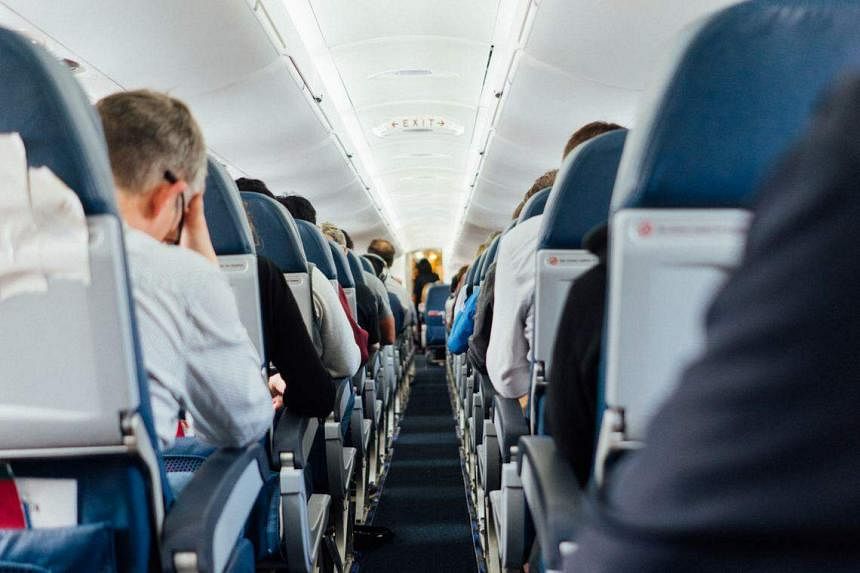
Some plus-size travellers are calling for airlines to offer them an extra seat free of charge. PHOTO: UNSPLASH
Apr 30, 2023
Even at the best of times, flying can be painful. Your neck aches from lolling sideways while you doze, your knees hurt after being bent at 90 degrees for too long and a dull ache is spreading across your lower back.
Now imagine enduring all that as a plus-size traveller. The discomfort and indignity prompted a plus-size woman from the United States to petition airlines to provide larger travellers with an extra seat free of charge. Unsurprisingly, her campaign sparked headlines and heated debates.
Around the world, airline seats are shrinking even as people are getting larger. FlyersRights, a US-based not-for-profit organisation, found that the width of airplane seats has shrunk by about 5cm over the past few decades. The pitch, an industry measure of legroom, has been reduced by about 5cm to 13cm.
Meanwhile, worldwide obesity has nearly tripled since 1975. About 39 per cent of adults are overweight, with a third of them obese, according to the World Health Organisation (WHO). Singapore fares better, with the obesity rate at 10.5 per cent in 2020, though this is the country’s highest in a decade.
Currently, many airlines including Scoot, United Airlines and British Airways require plus-size passengers to purchase an additional seat. Canada-based airlines such as Air Canada and WestJet are an exception, after a 2008 court ruling required them to provide more than one seat to severely obese travellers or disabled people who need an attendant seated with them.
In general, airline websites state that passengers who cannot lower the armrests or fit comfortably into one seat are expected to purchase an extra one.
“Failure to do so may result in you being denied transportation,” states budget carrier Scoot on its website.
They posit that obesity is not a lifestyle choice but a disease – a stance shared by bodies such as the WHO and the American Medical Association, even if some medical experts disagree.
Their main ask is a clearer definition of what constitutes a guest of size. For instance, airlines generally provide their seat width and pitch on their websites but few offer up the length of their seat belt and extender, if the latter is offered.
And what constitutes fitting comfortably into one’s seat? Often, it comes down to a judgment call. If the passenger in the next seat says nothing, flight crew are less likely to intervene.
But what if a passenger genuinely requires more room? Offering them an extra seat would drive up costs for all passengers, though perhaps not as much as one might expect.
In 2008, the Council of Canadians with Disabilities estimated that the new “one-person, one-fare” policy would cost Air Canada about US$6.93 million (S$9.26 million) a year, or an extra 77 Canadian cents (75 Singapore cents) a ticket.
It is a small amount compared to what we shell out for airport or tourism taxes, but realistically, nobody likes a fare hike. Detractors say it is a slippery slope. What else might the majority of passengers be called upon to subsidise? Taller people might point out that they stump up for the exit row, likewise parents for a bassinet seat.
A more compassionate approach is to consider inclusivity.
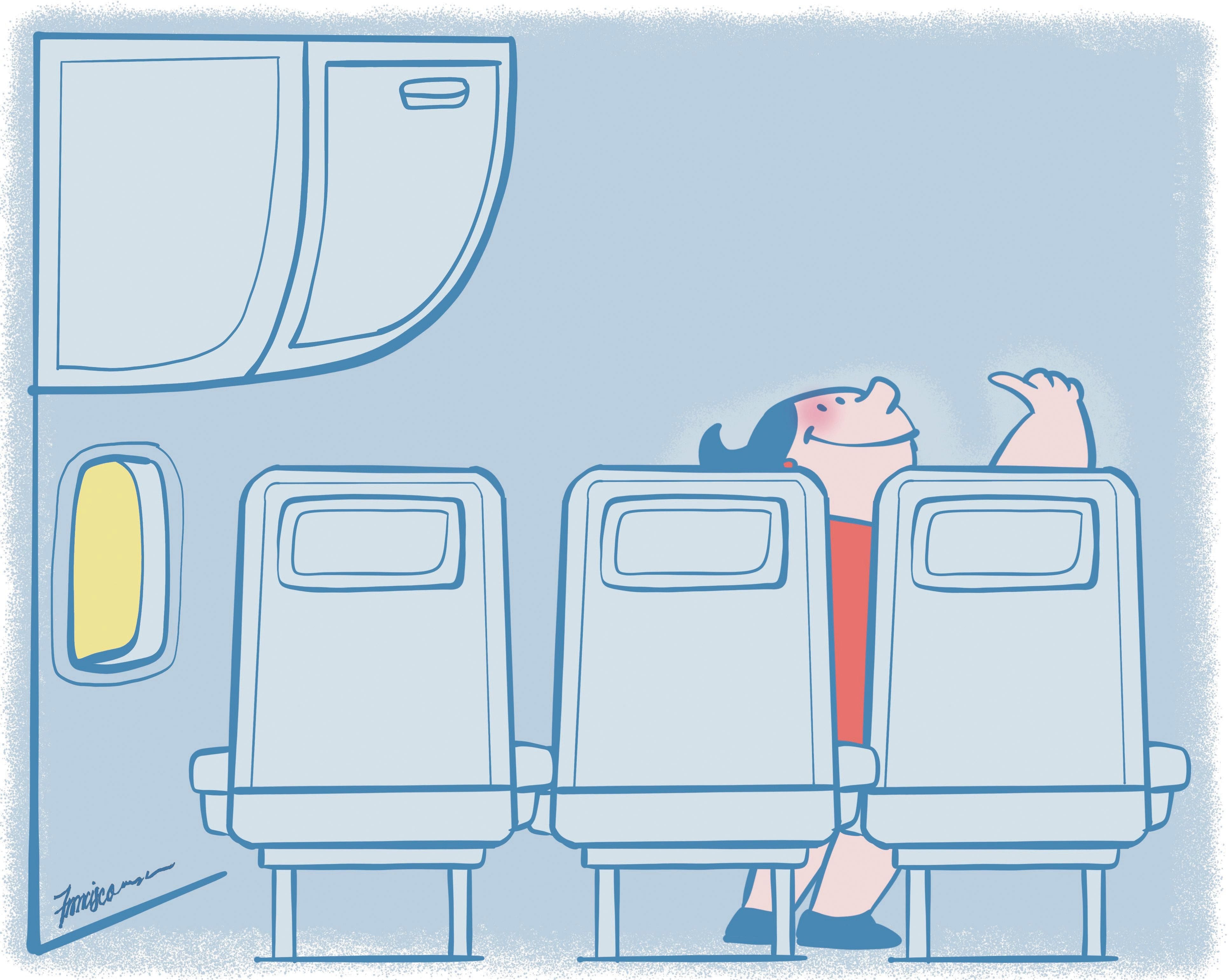
ST ILLUSTRATION: MANNY FRANCISCO
In recent years, there has been a growing call for disability inclusion, including sensitivity to the intellectually disabled. The Singapore Land Transport Authority’s yellow sticker campaign encourages passengers to offer a seat to those with less visible health conditions, such as people going through cancer treatment.
As a nation, we accept that more of our taxpayer dollars will go to healthcare spending in the years ahead. But obesity remains an outlier.
“It’s one of the few conditions that people still feel OK to mock. People assume you’re fat because you have no discipline or willpower,” says S, who is in his 30s and weighs around 117 kg.
Medical research has found that factors such as medication, hormonal imbalances and genetics can all contribute to obesity. Larger folk know this. But it doesn’t take the sting out of dirty looks from other travellers, or those who outrightly ask flight crew for a change of seat.
To ease potential embarrassment, some plus-size travellers bring their own seat belt extenders, or drink as little as they can during the flight to minimise restroom trips.
Many do their best to reduce inconvenience to seat mates, even at the expense of their own comfort. On a flight from Singapore to Istanbul recently, I sat beside a large man who, despite being in the dreaded middle seat, determinedly avoided using the armrests throughout the 11-hour journey.
In a competitive aviation landscape, companies that can offer a sweeter deal to large travellers might find themselves rewarded by customer loyalty.
In North America, US-based Southwest Airlines has garnered a reputation as having one of the most forgiving policies. Plus-sized travellers have the option to purchase two seats and can get a refund on the additional seat after their flight. According to its website, the airline will grant the refund even if the flight was oversold. Alaska Airlines has a similar policy, but will refund the additional seat only if the flight was not full.
Singapore Airlines staff will, at no cost, shift larger passengers so they have an empty seat next to them as long as one is available on the flight. This applies to travellers who are “unable to be seated without impacting their own safety or those around them”, though the airline did not state how this is defined.
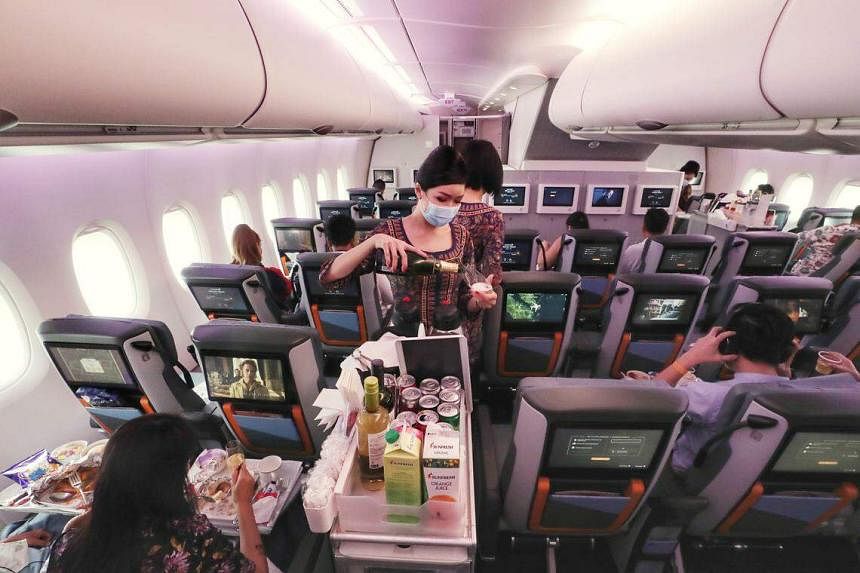
SIA staff will shift larger passengers so they have an empty seat next to them as long as one is available on the flight. PHOTO: ST FILE
Companies do not need to give extra seats away for free – the middle ground is charging a lower price. KLM, for instance, offers a 25 per cent discount to guests of size for their second seat.
Larger seats, costing more, could be demarcated in a “comfort zone” section of the plane, similar to the Scoot-in-silence quiet cabin that the budget airline reserves for those aged 12 and up.
Airlines might reserve exit row seats for those with larger-than-usual measurements, be they plus-size or tall passengers. And if flights are not full, check-in agents could, upon request, offer to block out a free seat next to larger folks.
Airlines, of course, must weigh the commercial viability of such decisions. But I believe some responsibility lies with the non-plus-size majority to make the journey easier for larger folks.
One might groan inwardly if the baby seated next to you begins to wail, but it is poor form to express frustration to the desperately exhausted parents.
Similarly, it is no picnic to be assigned a seat next to someone large. But the kindest approach is to grin and bear it, keep snarky thoughts private and if necessary, request politely that you both try to keep within the armrests. The flight will be over in a matter of hours, but any hostility you express might stay with them for much longer.
In the past few decades, the democratisation of air travel has given us cheaper flights and more routes. Travellers and airlines should take reasonable measures to ensure that everyone can fly comfortably and without discrimination.
S, from earlier, says: “We have to be realistic about how other people will relate to us, but I hope this won’t discourage overweight people from seeing the world.”
Or is obesity just plain gluttony and the result of laziness and the lack of discipline to exercise and watch what one eats?
"Advocacy groups such as The Obesity Collective from Australia are now calling for industrywide regulations that do not discriminate against guests of size.
They posit that obesity is not a lifestyle choice but a disease – a stance shared by bodies such as the WHO and the American Medical Association, even if some medical experts disagree."
Should plus-size travellers get an extra seat on the plane?
Around the world, waistlines are expanding as airline seats shrink. But clear and compassionate regulations can help larger travellers avoid discomfort and embarrassment.

Clara Lock
Travel Correspondent

Some plus-size travellers are calling for airlines to offer them an extra seat free of charge. PHOTO: UNSPLASH
Apr 30, 2023
Even at the best of times, flying can be painful. Your neck aches from lolling sideways while you doze, your knees hurt after being bent at 90 degrees for too long and a dull ache is spreading across your lower back.
Now imagine enduring all that as a plus-size traveller. The discomfort and indignity prompted a plus-size woman from the United States to petition airlines to provide larger travellers with an extra seat free of charge. Unsurprisingly, her campaign sparked headlines and heated debates.
Around the world, airline seats are shrinking even as people are getting larger. FlyersRights, a US-based not-for-profit organisation, found that the width of airplane seats has shrunk by about 5cm over the past few decades. The pitch, an industry measure of legroom, has been reduced by about 5cm to 13cm.
Meanwhile, worldwide obesity has nearly tripled since 1975. About 39 per cent of adults are overweight, with a third of them obese, according to the World Health Organisation (WHO). Singapore fares better, with the obesity rate at 10.5 per cent in 2020, though this is the country’s highest in a decade.
Currently, many airlines including Scoot, United Airlines and British Airways require plus-size passengers to purchase an additional seat. Canada-based airlines such as Air Canada and WestJet are an exception, after a 2008 court ruling required them to provide more than one seat to severely obese travellers or disabled people who need an attendant seated with them.
In general, airline websites state that passengers who cannot lower the armrests or fit comfortably into one seat are expected to purchase an extra one.
“Failure to do so may result in you being denied transportation,” states budget carrier Scoot on its website.
Fairer rules across the board
Are the current rules fair? Some think not. Advocacy groups such as The Obesity Collective from Australia are now calling for industrywide regulations that do not discriminate against guests of size.They posit that obesity is not a lifestyle choice but a disease – a stance shared by bodies such as the WHO and the American Medical Association, even if some medical experts disagree.
Their main ask is a clearer definition of what constitutes a guest of size. For instance, airlines generally provide their seat width and pitch on their websites but few offer up the length of their seat belt and extender, if the latter is offered.
And what constitutes fitting comfortably into one’s seat? Often, it comes down to a judgment call. If the passenger in the next seat says nothing, flight crew are less likely to intervene.
But what if a passenger genuinely requires more room? Offering them an extra seat would drive up costs for all passengers, though perhaps not as much as one might expect.
In 2008, the Council of Canadians with Disabilities estimated that the new “one-person, one-fare” policy would cost Air Canada about US$6.93 million (S$9.26 million) a year, or an extra 77 Canadian cents (75 Singapore cents) a ticket.
A more inclusive society
So would you pay an extra 75 cents for each flight ticket in order for larger folks to enjoy a more comfortable flight?It is a small amount compared to what we shell out for airport or tourism taxes, but realistically, nobody likes a fare hike. Detractors say it is a slippery slope. What else might the majority of passengers be called upon to subsidise? Taller people might point out that they stump up for the exit row, likewise parents for a bassinet seat.
A more compassionate approach is to consider inclusivity.

ST ILLUSTRATION: MANNY FRANCISCO
In recent years, there has been a growing call for disability inclusion, including sensitivity to the intellectually disabled. The Singapore Land Transport Authority’s yellow sticker campaign encourages passengers to offer a seat to those with less visible health conditions, such as people going through cancer treatment.
As a nation, we accept that more of our taxpayer dollars will go to healthcare spending in the years ahead. But obesity remains an outlier.
“It’s one of the few conditions that people still feel OK to mock. People assume you’re fat because you have no discipline or willpower,” says S, who is in his 30s and weighs around 117 kg.
Medical research has found that factors such as medication, hormonal imbalances and genetics can all contribute to obesity. Larger folk know this. But it doesn’t take the sting out of dirty looks from other travellers, or those who outrightly ask flight crew for a change of seat.
To ease potential embarrassment, some plus-size travellers bring their own seat belt extenders, or drink as little as they can during the flight to minimise restroom trips.
Many do their best to reduce inconvenience to seat mates, even at the expense of their own comfort. On a flight from Singapore to Istanbul recently, I sat beside a large man who, despite being in the dreaded middle seat, determinedly avoided using the armrests throughout the 11-hour journey.
Creative and compassionate solutions
In her book, You Just Need To Lose Weight And 19 Other Myths About Fat People, author and activist Aubrey Gordon talks about navigating the maze of airline policies that determines whether or not she will be allowed to fly, an additional source of travel stress.In a competitive aviation landscape, companies that can offer a sweeter deal to large travellers might find themselves rewarded by customer loyalty.
In North America, US-based Southwest Airlines has garnered a reputation as having one of the most forgiving policies. Plus-sized travellers have the option to purchase two seats and can get a refund on the additional seat after their flight. According to its website, the airline will grant the refund even if the flight was oversold. Alaska Airlines has a similar policy, but will refund the additional seat only if the flight was not full.
Singapore Airlines staff will, at no cost, shift larger passengers so they have an empty seat next to them as long as one is available on the flight. This applies to travellers who are “unable to be seated without impacting their own safety or those around them”, though the airline did not state how this is defined.

SIA staff will shift larger passengers so they have an empty seat next to them as long as one is available on the flight. PHOTO: ST FILE
Companies do not need to give extra seats away for free – the middle ground is charging a lower price. KLM, for instance, offers a 25 per cent discount to guests of size for their second seat.
Larger seats, costing more, could be demarcated in a “comfort zone” section of the plane, similar to the Scoot-in-silence quiet cabin that the budget airline reserves for those aged 12 and up.
Airlines might reserve exit row seats for those with larger-than-usual measurements, be they plus-size or tall passengers. And if flights are not full, check-in agents could, upon request, offer to block out a free seat next to larger folks.
Airlines, of course, must weigh the commercial viability of such decisions. But I believe some responsibility lies with the non-plus-size majority to make the journey easier for larger folks.
One might groan inwardly if the baby seated next to you begins to wail, but it is poor form to express frustration to the desperately exhausted parents.
Similarly, it is no picnic to be assigned a seat next to someone large. But the kindest approach is to grin and bear it, keep snarky thoughts private and if necessary, request politely that you both try to keep within the armrests. The flight will be over in a matter of hours, but any hostility you express might stay with them for much longer.
In the past few decades, the democratisation of air travel has given us cheaper flights and more routes. Travellers and airlines should take reasonable measures to ensure that everyone can fly comfortably and without discrimination.
S, from earlier, says: “We have to be realistic about how other people will relate to us, but I hope this won’t discourage overweight people from seeing the world.”
Last edited:



